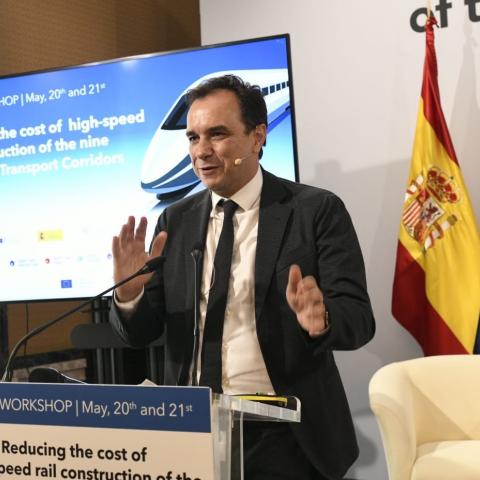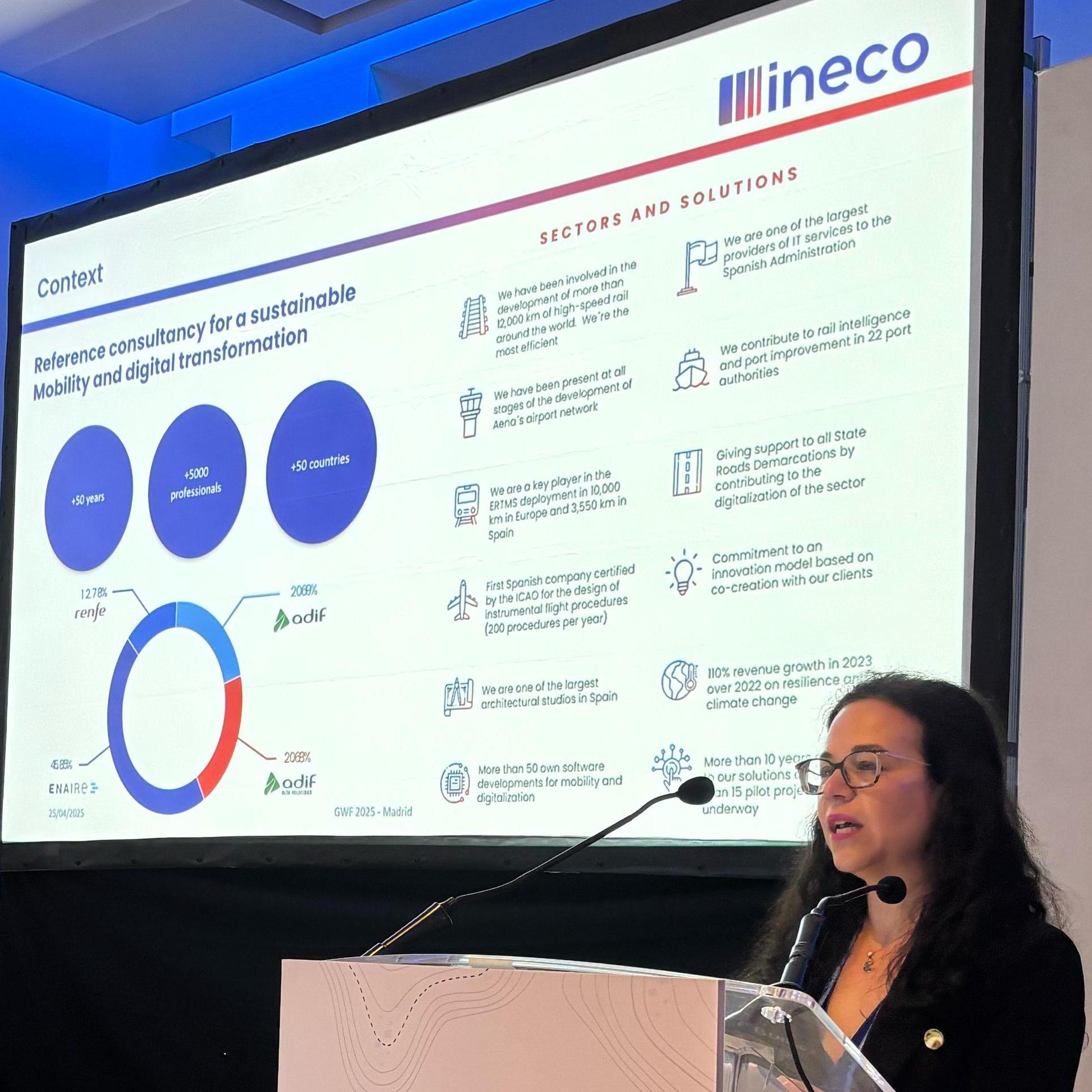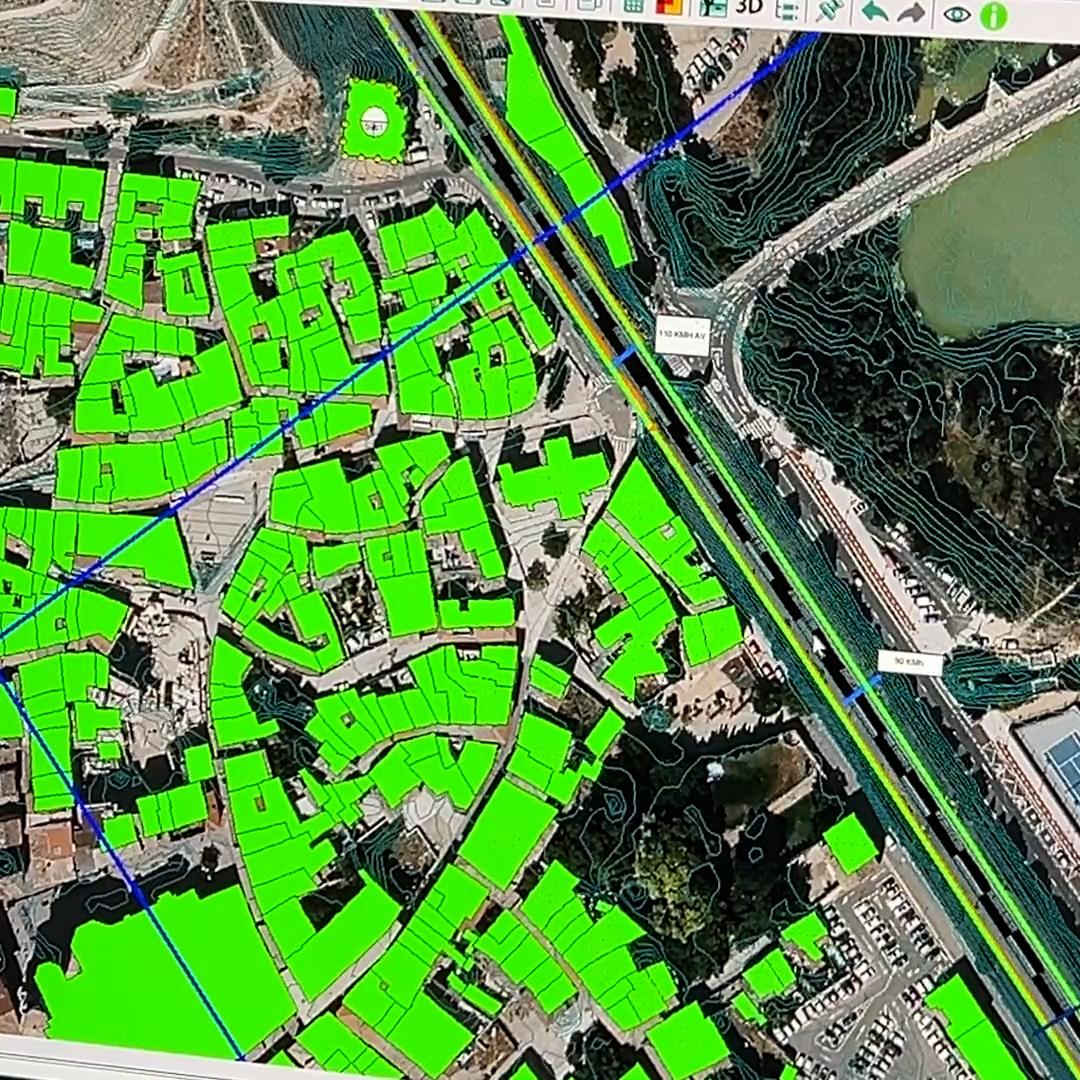Spain reaffirms its position as a global leader in high-speed rail infrastructure by hosting a high-level European summit focused on promoting a more competitive model for the trans-European transport network. The forum, titled “Reducing the Cost of High-Speed Rail Construction of the Nine European Transport Corridors,” was organized by the Atlantic Corridor Office in collaboration with the European Commission. It follows the findings presented in Ineco’s report, “Efficiency of the Spanish Sector in the Development of High-Speed Rail.”
Madrid served as the venue for these two days of discussions, which aimed to examine deployment plans for high-speed rail across Europe and address the economic, climatic, and political challenges faced by the nine corridors and their cross-border connections.
Spain showcased its leadership in high-speed rail at this event, supported by a comprehensive document outlining the technical keys that have enabled the construction of Europe’s most extensive network—over 3,800 km—at the lowest average cost per kilometer, while maintaining the highest standards of quality, safety, and sustainability. This model has been highlighted as exportable, adaptable, and essential for European expansion.
A Recognized Model for Efficiency and Sustainability
The report highlights that Spain constructs high-speed rail at an average cost of 17.7 million euros per kilometer, significantly lower than the international average of 45.5 million euros—more than double. Additionally, the annual maintenance cost per kilometer is just 100,700 euros, representing less than 0.5% of the initial investment cost. This impressive performance is achieved without compromising on high standards: speeds of up to 350 km/h, double tracks, and new platforms.
Spain's model also stands out due to key factors such as strategic planning and budgetary stability: technical standardization (including sleepers, catenary, signaling), broad social and institutional consensus, professionalized public management, and a capable, internationally experienced business sector. Moreover, Spain is one of the European countries with the most kilometers equipped with ERTMS, making it a highly exportable and adaptable model for new markets, as demonstrated by its experience in countries like Saudi Arabia, Mexico, India, and the United Kingdom.
High-Level Institutional Interventions
Sergio Vázquez Torrón, President of Ineco, was responsible for officially closing the event. In his speech, he emphasized the value of Spanish know-how, describing it as having a “strong technical profile focused on results and aligned with public policies.” He also highlighted the role of public engineering as a driver of transformation: “There are many reasons that explain the Spanish model, but if I had to pick just two, I would say that political and social consensus and the role of public entities are key.”
The technical presentation of the report was delivered by Cristina Delgado, Deputy Director of Organization and International Business Management, and Javier Anibarro, an expert in Transport Economics and Policy and the study’s coordinator. Both defended the keys to the success of the Spanish model and shared their insights on the challenges posed by the current geopolitical context.
European Summit with Participation of 20 Countries
The event, held at the Palacio de Zurbano, brought together representatives from the governments of 14 EU countries, the United Kingdom, and around twenty international delegations, as well as institutions such as the European Investment Bank. The European Commission was represented by Kristian Schmidt, Director of Land Transport at DG MOVE, and by the top officials of the nine European Transport Corridors.
Under the title “Reducing the Cost of High-Speed Rail Construction of the Nine European Transport Corridors,” the summit marked a milestone by bringing together, for the first time, all the key stakeholders responsible for these vital corridors. Europe views Spain as a strategic asset in high-speed rail and as a model of efficiency, sustainability, and international collaboration—positioning Spain as a reference point for the development of the trans-European transport network and its corridors.








